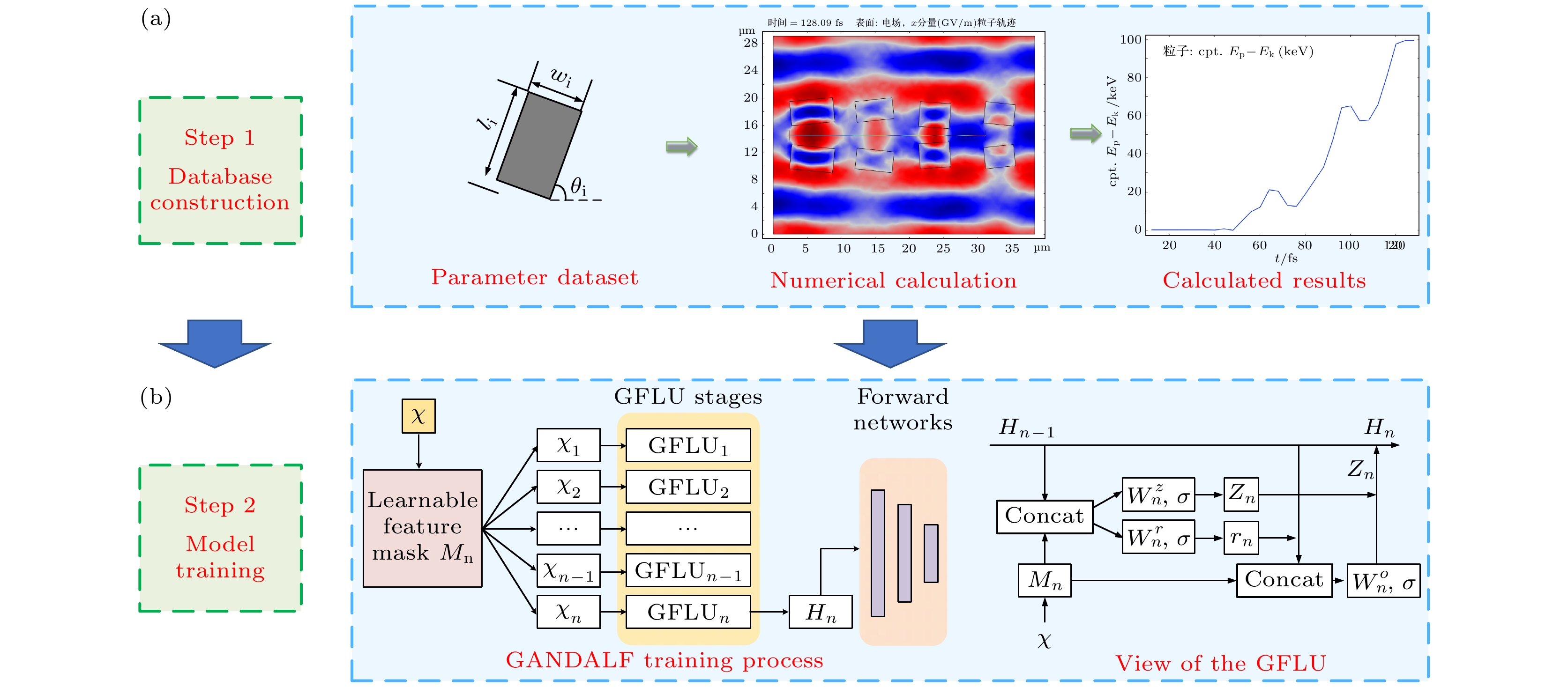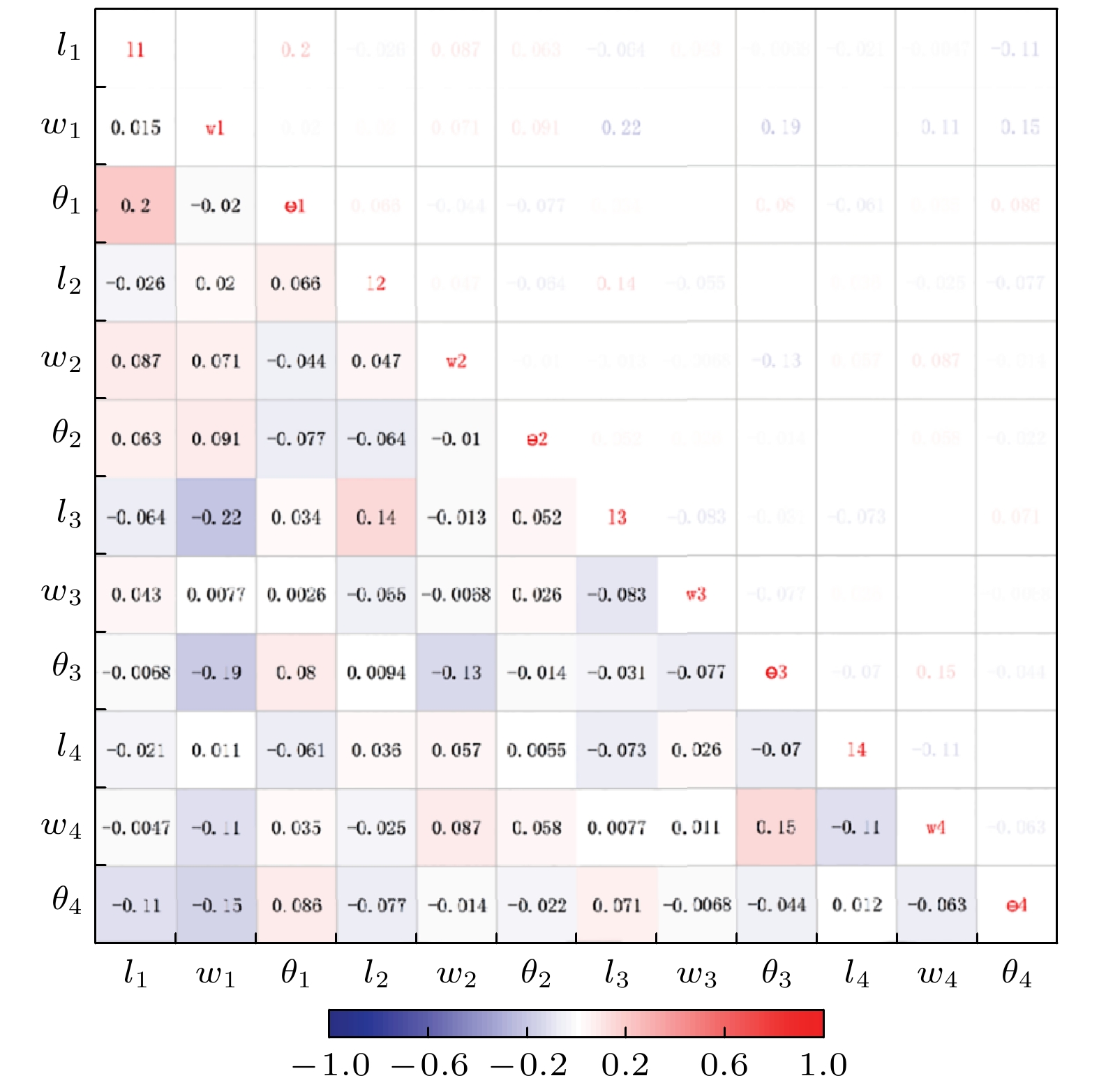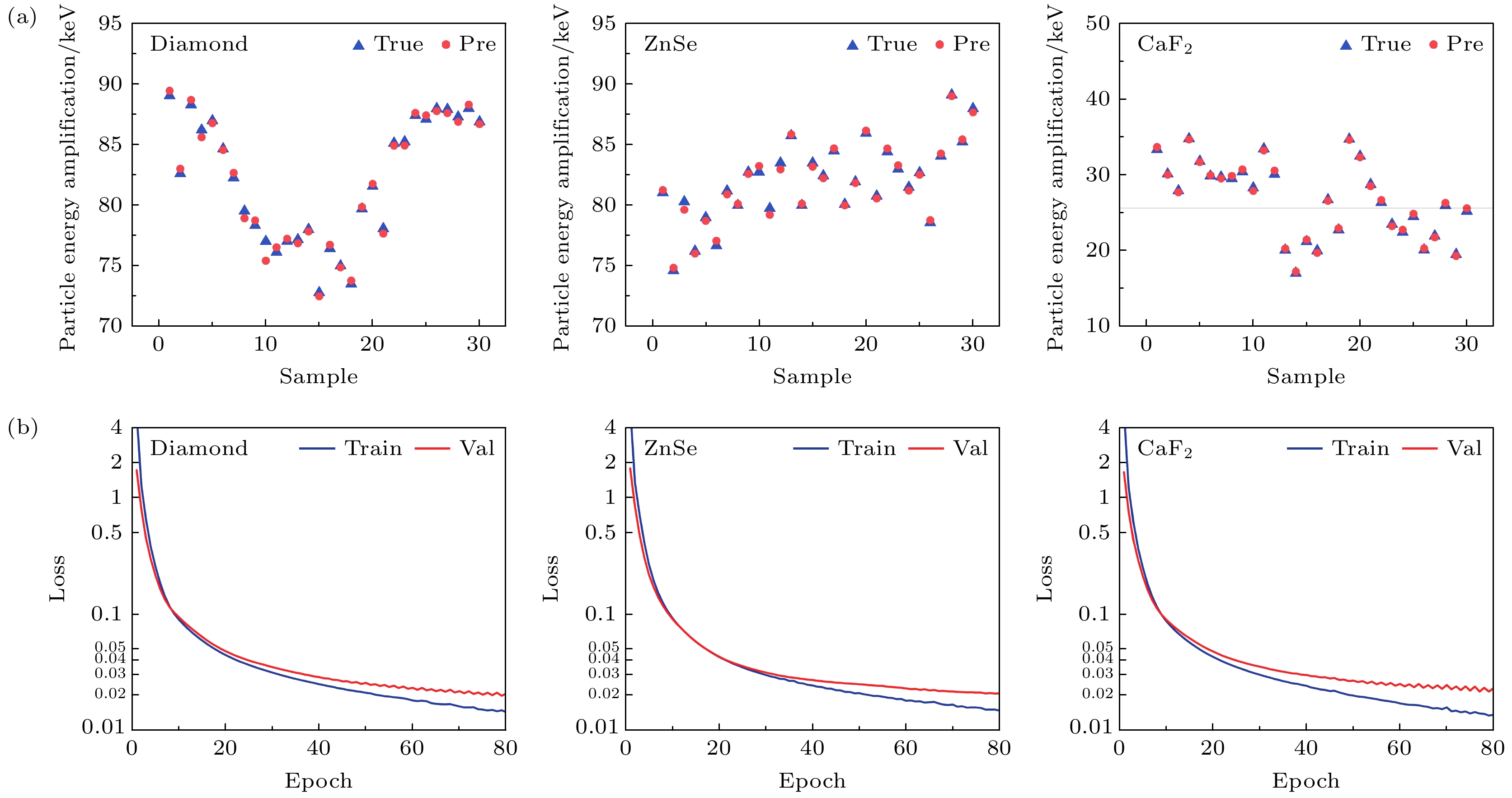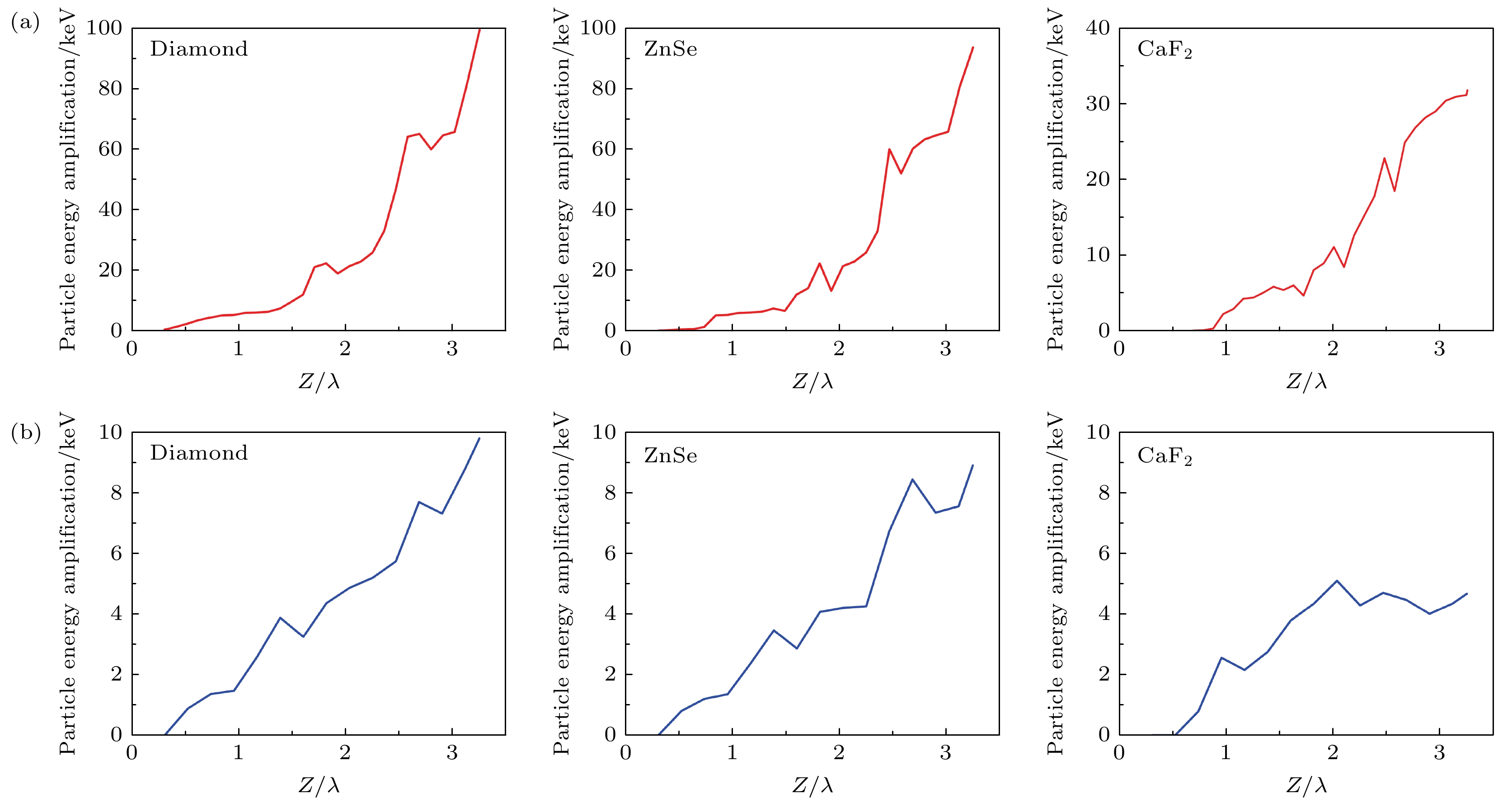-
电介质激光加速器作为一种微型加速器, 其结构设计直接影响加速粒子束的能量增益和束流品质. 多数设计基于波长约1 μm的近红外激光驱动光源. 采用10倍波长的长波红外激光作为驱动光源, 有望在保持加速梯度的前提下获得更高束流品质. 受长距离加速限制, 相关波段下的结构设计仍较为缺失. 为此, 本研究提出一种基于深度学习技术的长波红外介电光栅加速器结构设计方法, 建立包含几何参数、材料性质、光场能量等多个参数的综合评估方法, 通过精准预测粒子能量增幅, 综合提取最优粒子能量增幅对应的结构参数以实现结构设计. 结果表明, 本研究所设计的光栅加速器粒子能量增幅高达99.5 keV, 同比增长19.9%, 可实现100%的传输效率, 束斑半径14.5 μm, 加速的平均粒子束电流为20.4 fA, 对比近红外光栅结构高出了6.9倍, 且粒子束亮度与近红外光栅结构相当. 本研究为长波红外高净增益介电光栅加速器的设计提供了潜在的技术路线, 同时为复杂光电器件结构设计提供一个新思路.Dielectric laser accelerators (DLAs), as compact particle accelerators, rely critically on their structural design to determine both the energy gain and beam quality of accelerated bunches. Although most existing DLAs are driven by near-infrared lasers with a wavelength of approximately 1 μm, the use of long-wave infrared (LWIR) lasers at a wavelength ten times that of this wavelength indicates that it is possible to achieve excellent beam quality without sacrificing acceleration gradient. To address the lack of optimized structural designs in the LWIR band where long-distance acceleration poses unique challenges—we introduce a deep learning–based design method for LWIR dielectric grating accelerator structures. Our approach integrates geometric parameters, material properties, and optical-field energy metrics into a unified evaluation framework and uses a surrogate model to predict particle energy gain with high precision. Optimal structural parameters are then extracted to realize the final design. The simulation results show that the energy gain is 99.5 keV (a year-over-year increase of 19.9% ), the transmission efficiency is 100%, the beam spot radius of 14.5 μm, and the average beam current is 20.4 fA, which is 6.9 times higher than similar near-infrared gratings, while maintaining equivalent beam brightness. This work provides a feasible technical route for designing high-netgain LWIR dielectric grating accelerators and a novel framework for optimizing the structure of complex optoelectronic devices.
-
图 1 介电光栅加速器设计方案及其持续性加速原理示意图 (a)介电光栅加速器的结构设计及相关参数; (b)介电光栅加速器的持续性加速原理
Fig. 1. Schematic of the dielectric grating accelerator design and its continuous acceleration mechanism: (a) Structural design and related parameters of the dielectric grating accelerator; (b) principle of continuous acceleration in the dielectric grating accelerator.
图 4 预测结果和模型性能评估 (a)预测结果; (b)损失函数. 其中蓝色数据点代表数值计算的真实值, 红色数据点表示GANDALF模型预测值
Fig. 4. Prediction results and model performance evaluation: (a) Prediction results; (b) loss function. The blue data points represent the real value of numerical calculation, and the red data points represent the predicted value of Gandalf model.
图 5 不同波长下C, CaF2, ZnSe介电光栅加速器加速效果对比及性能评估 (a) 9.6 μm不同材料光栅加速器加速效果; (b) 800 nm不同材料光栅加速器加速效果
Fig. 5. Comparison of acceleration performance and evaluation of dielectric grating accelerators for Diamond, CaF2, and ZnSe at different wavelengths: (a) Acceleration performance of grating accelerators for different materials at 9.6 μm; (b) acceleration performance of grating accelerators for different materials at 800 nm.
图 6 C, CaF2, ZnSe光栅结构加速器的粒子加速性能评估 (a)不同初始注入能量下粒子能量增幅的变化; (b)束斑半径随横向位移的变化; (c)粒子束流的传输效率
Fig. 6. Particle acceleration performance evaluation of diamond, CaF2, and ZnSe grating structure accelerators: (a) Variation of particle energy amplification at different initial injection energies; (b) variation of beam spot radius with transverse displacement; (c) transmission efficiency of particle beam current.
图 7 金刚石材料长波红外光栅结构与近红外光栅结构加速粒子电流及粒子束亮度对比 (a)不同波长下结构加速粒子电流对比; (b)不同波长下粒子束亮度对比
Fig. 7. Comparison of particle current and beam brightness accelerated by diamond material long-wave infrared and near-infrared grating structures: (a) Comparison of particle current accelerated by grating structures at different wavelengths; (b) comparison of beam brightness at different wavelengths.
表 1 金刚石材料光栅加速器最优几何参数
Table 1. Optimal geometric parameters of diamond material for grating accelerators.
Geometric parameter i Value li/μm 1 3.56 2 3.08 3 3.67 4 3.15 wi/μm 1 6.36 2 5.47 3 4.51 4 4.51 $\varTheta_i $/(°) 1 –5.4 2 –6 3 4 4 6 -
[1] Zhang Y, Fang W C, Huang X X, Tan J H, Wang C P, Zhao Z T 2021 Nucl. Sci. Tech. 32 38
 Google Scholar
Google Scholar
[2] Tantawi S G, Dolgashev V, Higashi Y, Dolgashev V A, Cary J R, Kemp M A 2010 AIP Conf. Proc. 1299 29
[3] Higo T, Higashi Y, Matsumoto S, Yokoyama K, Doebert S, Grudiev A, Riddone G, Wuensch W, Zennaro R, Adolphsen C, Dolgashev V, Jensen A, Laurent L, Tantawi S G, Wang F, Wang J W 2010 Proc. 14th Adv. Accel. Concepts Wksp.
[4] Mizuno K, Ono S, Shimoe O 1975 Nature 253 184
 Google Scholar
Google Scholar
[5] Soong K, Byer R L, Colby E R, England R J, Peralta E A 2012 AIP Conf. Proc. 1507 516
[6] Agustsson R, Arab E, Murokh A, O’Shea B, Ovodenko A, Pogorelsky I, Rosenzweig J, Solovyov V, Tilton R 2015 Opt. Mater. Express 5 2835
 Google Scholar
Google Scholar
[7] Cesar D, Maxson J, Musumeci P, Shen X, England R J, Wootton K P 2018 Nucl. Instrum. Methods A 909 252
 Google Scholar
Google Scholar
[8] Plettner T, Byer R L, Montazeri B 2011 J. Mod. Opt. 58 1518
 Google Scholar
Google Scholar
[9] Hughes T, Veronis G, Wootton K P, England R J, Fan S 2017 Opt. Express 25 15414
 Google Scholar
Google Scholar
[10] Tompkins H G, Tigner E L S 1993 Refractive Index of Optical Materials in the Infrared (Academic Press
[11] Plettner T, Lu P P, Byer R L 2006 Phys. Rev. ST Accel. Beams 9 111301
 Google Scholar
Google Scholar
[12] Peralta E A, Soong K, England R J, Colby E R, Wu Z, Montazeri B, McGuinness C, McNeur J, Leedle K J, Walz D, Sozer E B, Cowan B, Schwartz B, Travish G, Byer R L 2013 Nature 503 91
 Google Scholar
Google Scholar
[13] Cesar D, Custodio S, Maxson J, Musumeci P, Shen X, Threlkeld E, England R J, Hanuka A, Makasyuk I V, Peralta E A, Wootton K P, Wu Z 2018 Commun. Phys. 1 46
 Google Scholar
Google Scholar
[14] Lin X E 2001 Phys. Rev. ST Accel. Beams 4 051301
 Google Scholar
Google Scholar
[15] Cowan B M 2008 Phys. Rev. ST Accel. Beams 11 011301
 Google Scholar
Google Scholar
[16] Mei X, Zha R, Pan Y, Wang S, Sun B, Lei C, Ke C, Zhao Z, Wang D 2023 Ultrafast Sci. 3 0050
 Google Scholar
Google Scholar
[17] Plettner T, Byer R L, Montazeri B 2011 J. Mod. Opt. 58 1518
 Google Scholar
Google Scholar
[18] Plettner T, Byer R L, McGuinness C, Hommelhoff P 2009 Phys. Rev. ST Accel. Beams 12 101302
 Google Scholar
Google Scholar
[19] Plettner T, Byer R L 2008 Phys. Rev. ST Accel. Beams 11 030704
 Google Scholar
Google Scholar
[20] Siemann R H 2004 Phys. Rev. ST Accel. Beams 7 061303
 Google Scholar
Google Scholar
[21] Breuer J, Graf R, Apolonski A, Hommelhoff P 2014 Phys. Rev. ST Accel. Beams 17 021301
 Google Scholar
Google Scholar
[22] Breuer J, Hommelhoff P 2014 Nucl. Instrum. Methods Phys. Res. A. 740 114
 Google Scholar
Google Scholar
[23] Breuer J, McNeur J, Hommelhoff P 2014 J. Phys. B At. Mol. Opt. Phys. 47 234004
 Google Scholar
Google Scholar
[24] Black D S, Zhao Z X, Leedle K J, Miao Y, Byer R L, Fan S, Solgaard O 2020 Phys. Rev. Accel. Beams. 23 114001
 Google Scholar
Google Scholar
[25] He Y F, Sun B, Ma M J, Li W, He Q Y, Cui Z H, Wang S Y, Zhao Z Q 2022 Nucl. Sci. Tech. 33 120
 Google Scholar
Google Scholar
[26] Ma W, Xu Y H, Xiong B, Deng L, Peng R W, Wang M, Liu Y M 2022 Adv. Mater. 34 2110022
 Google Scholar
Google Scholar
[27] Liu X H, Wang P, Xiao C Y, Fu L C, Xu J, Zhang D, Zhou H, Fan T X 2023 Adv. Funct. Mater. 33 2212068
 Google Scholar
Google Scholar
[28] Zhang Q, Liu C, Wan X, Zhang L, Liu S, Yang Y, Cui T J 2019 Adv. Theory Simul. 2 1800132
 Google Scholar
Google Scholar
[29] Wang C Q, Cheng X G, Wang R, Hu X, Wang C H 2024 Laser Photonics Rev. 18 2300958
 Google Scholar
Google Scholar
[30] Lei Z D, Xu Y D, Zhao Y, Wang D 2024 Photon. Res. 12 123
 Google Scholar
Google Scholar
[31] Polyanskiy M N, Babzien M, Pogorelsky I V 2015 Optica 2 675
 Google Scholar
Google Scholar
[32] Pogorelsky I V, Babzien M, Ben-Zvi I, Skaritka J, Polyanskiy M N 2016 Nucl. Instrum. Methods Phys. Res. A 829 432
 Google Scholar
Google Scholar
计量
- 文章访问数: 293
- PDF下载量: 6
- 被引次数: 0













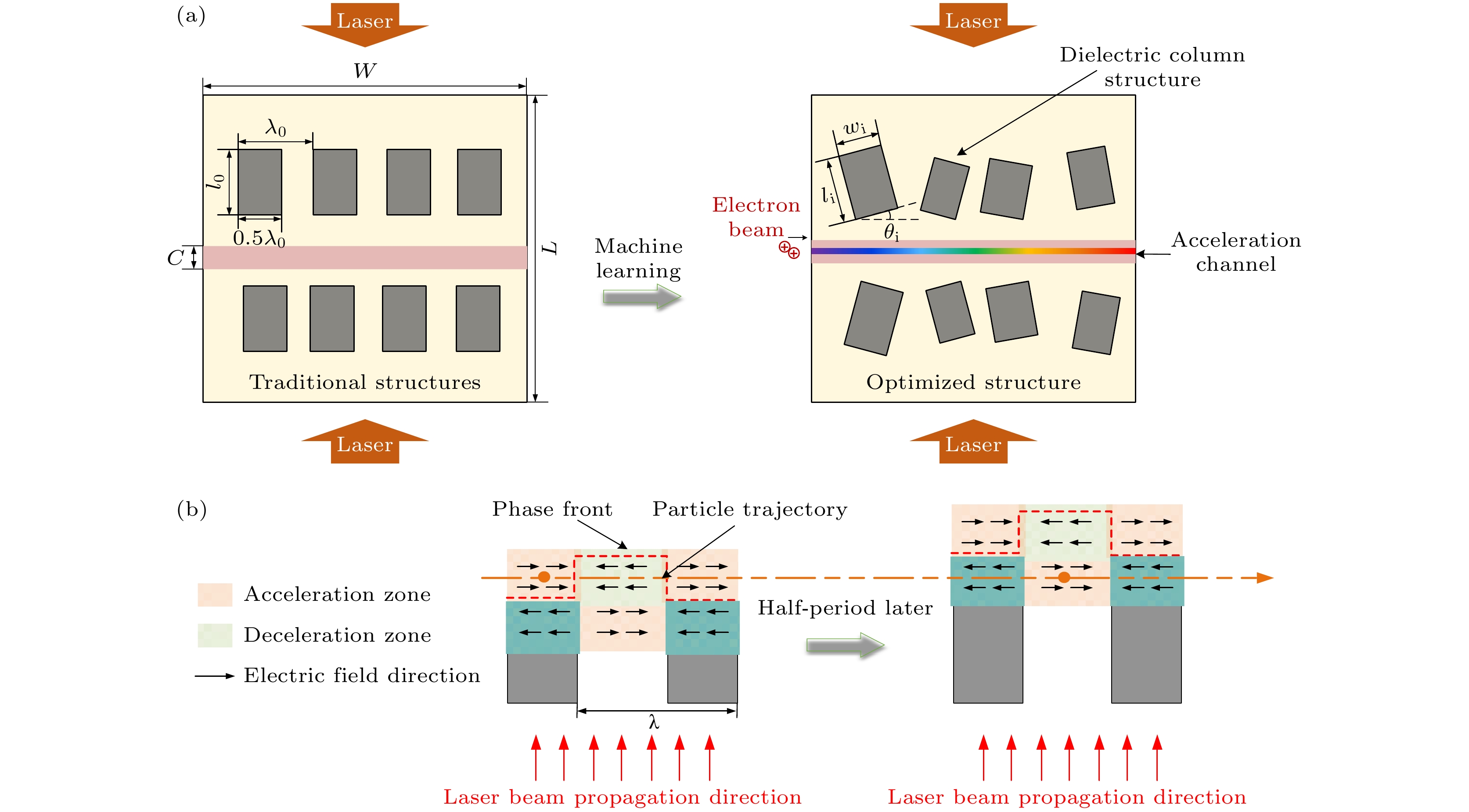
 下载:
下载:
